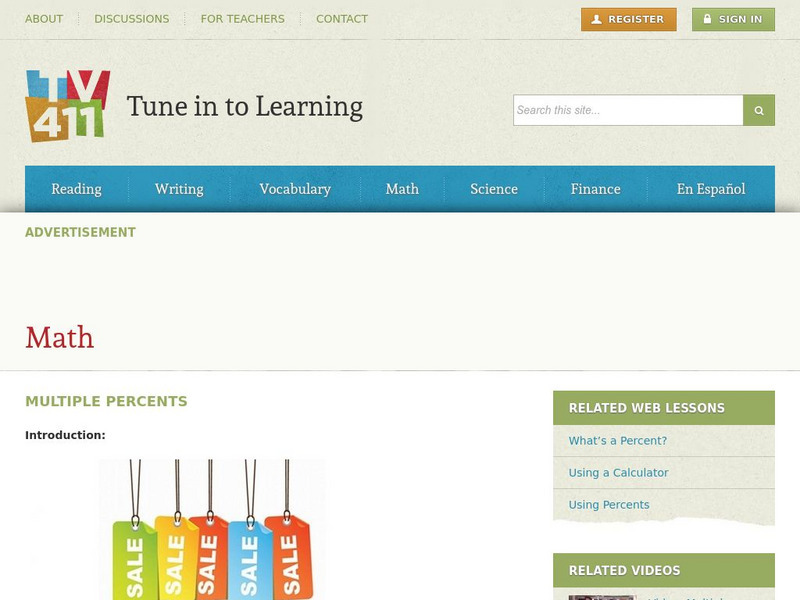Media Smarts
First Person
High schoolers explore the relationship between video games and actual population. Example: A 2005 study showed Latino youth play at higher rates than other groups, but there are no Latino playable characters. They watch a brief video...
Curated OER
Marketing to Teens: Introduction
An introductory instructional activity shows learners how pervasive and influential advertising is in our culture; particularly, how teenagers are actively targeted by advertisers. As teenagers, your students already have all the...
Curated OER
Distribution of children living at home
Learners use E-STAT to examine demographics. For this social demographics lesson, students use statistical data to determine if a particular family is in need of assistance. Learners will discuss social and educational policies and...
Curated OER
Meeting the Needs of an Aging Population
Learners examine population trends and predict how the age of the majority of Canadians will change 15 years from now in various geographic areas. They will gather statistical evidence that supports their projection. Learners will then...
Curated OER
Comparing the Health and Lifestyles of 13 Year-olds Around the World.
Eighth graders examine international data and statistics to evaluate the health and trends of 13 year old students around the world.
Curated OER
Where Do You Shop?
Students examine shopping patterns in another community to develop a hypothesis on why there are more opportunities for goods and services in some neighborhoods while others lack these goods and services.
Curated OER
A Country’s Shape Is More Than Its Borders
In this geography skills worksheet, students read an article and examine graphs about population prior to answering 13 short answer questions and 10 multiple choice questions. Students then respond to the writing prompt about population.
Curated OER
The First Nations, Métis, and Inuit Peoples of Canada
Students explore demographic shifts. In this Canadian Census lesson, students interpret data from the 2006 Census to determine the needs of the Aboriginal population in the country.
Curated OER
PETA Pressure
High schoolers examine what a "target audience" is and evaluate the PETA website for tactics that exploit the characteristics of their target audience. They read and discuss a handout, analyze the PETA website in small groups, and...
Curated OER
Population Growth and Urban Planning
Students discuss the following terms and their definitions: zero population growth, population density, demographics, urban sprawl, census, immigration, migration, infrastructure, population booms, megacities, birthrate, death rate,...
Curated OER
The Demographic Transition - A Contemporary Look at a Classic Model
Students examine classic demographic transition (DT) model, explain assumptions and limitations of model, construct graphs of contemporary demographic change, and explain contemporary demographic patterns in the context of the classic DT...
Curated OER
Using Current Data for Graphing Skills
Middle schoolers graph demographic information. In this graphing instructional activity, students choose what type of graph to create and what information to display. Links to examples of graphs and statistical data are provided. The...
Curated OER
Maine: State Facts
Students participate in various activities focusing on facts about Maine. They participate in interactive lessons with trivia facts, symbols, and statistics. They research the meaning of the state flag.
Curated OER
Neighborhood statistics
Middle schoolers examine statistics relating to neighborhoods. They use the data to explain how a population affects their environment. They discuss how businesses use statistics to find out information about their clientele.
Education Development Center
Tune in to Learning: Multiple Percents
Have you ever seen an item that you wanted on sale for 15% of its original price? Have you tried to figure out what the sale price would be? Using this interactive lesson from T.V. 411, you can learn to calculate discounts with percentages.
















